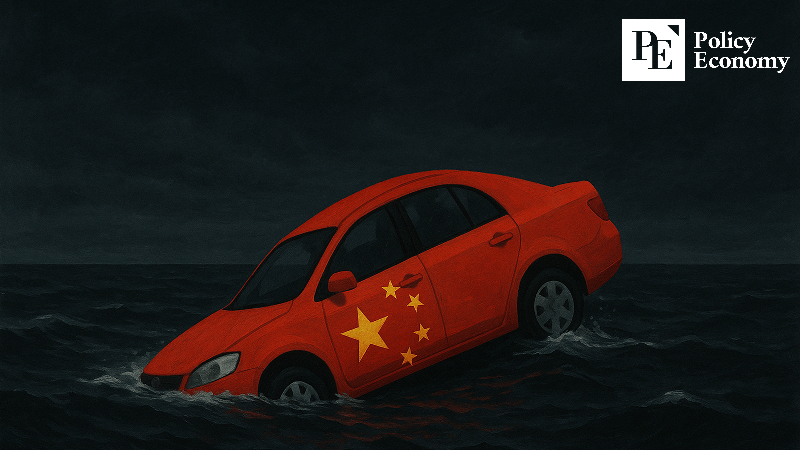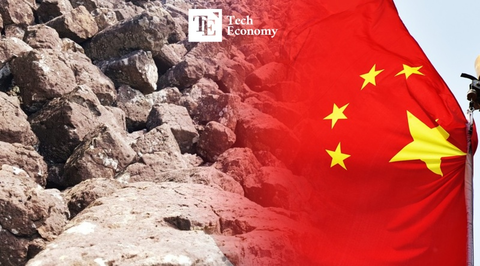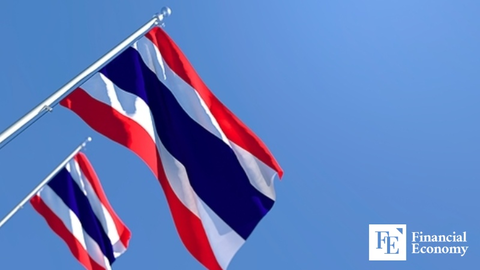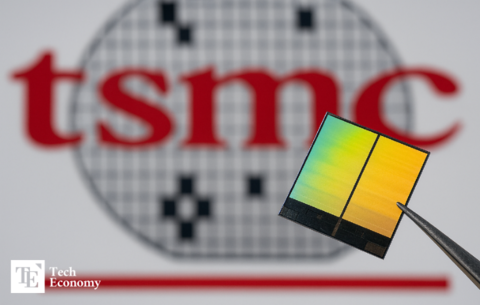Slowing EV Price War in China — But for How Long?
Input
Modified
Chinese automakers have slightly reduced discount rates under government pressure. The industry’s crisis continues following the central government’s termination of subsidies. Even BYD faces financial trouble, with many other companies on the brink of survival.

The fierce price war among Chinese automakers has entered a lull. After Beijing publicly warned of the potential market collapse caused by excessive competition, the overheated atmosphere has begun to cool. However, with the auto industry already in deep trouble, many in the market fear the same scenario could flare up again at any moment.
China’s Auto Discounts on the Decline
According to the South China Morning Post (SCMP) on August 8, recent discount rates offered by Hong Kong and mainland Chinese automakers have begun to edge down. A recent report by J.P. Morgan showed that the average discount rate for electric vehicle (EV) and internal combustion engine (ICE) manufacturers in mainland China dropped slightly from 17.4% in June to 16.7% last month. Nick Lai, J.P. Morgan’s Head of Asia-Pacific Autos Research, noted that this was an encouraging sign, given that industry-wide discounts had surged to record highs of over 17% in May, June, and early July following fierce competition after April’s Shanghai Auto Show.
This downward shift follows mounting pressure from Beijing. In late May, China’s Ministry of Industry and Information Technology (MIIT) warned that automakers initiating price cuts could face penalties, citing the risk that aggressive price wars could jeopardize the EV industry dominated by domestic companies. That same month, the China Association of Automobile Manufacturers (CAAM) condemned the “panic-driven” discount trend, arguing that selling below cost undermines operational efficiency and long-term viability, and calling for an end to monopolistic pricing practices. After an intense final push in June, automakers began scaling back discounts in July.
Losing Steam Without Subsidies
It remains uncertain whether the current decline in discount rates will last. Most Chinese EV makers are under severe financial strain, leaving them little choice but to continue engaging in cutthroat price competition. According to one market insider, “When the Chinese government ended its national EV subsidy program in 2023, the industry was almost entirely unprepared. A market that had relied on low-interest loans and subsidies began collapsing rapidly, pushing most companies to the brink of survival.”
Some local governments have stepped in with purchase subsidies for big-ticket items such as cars and home appliances to boost sluggish domestic consumption, but even these measures have proven unstable. In June, at least six local governments across China halted vehicle purchase subsidies. Zhengzhou and Luoyang in Henan Province announced the suspension after exhausting their first round of central government allocations, while Shenyang and Chongqing paused subsidies to improve capital efficiency. The Xinjiang Uyghur Autonomous Region also stopped providing subsidies for similar reasons.
One major reason for the abrupt suspension was the rapid depletion of funds. According to China’s Ministry of Commerce, more than 4 million vehicle purchase subsidy applications were filed nationwide by the end of May this year. Abuse of the program, such as the sale of so-called “0 km used cars,” worsened the problem. In this practice, dealers register brand-new cars as sold to claim subsidies, then resell them as “used” without any mileage. What was intended as a short-term fix for struggling automakers instead triggered a vicious cycle that led to the subsidies’ early withdrawal.

Major Players Now Sinking
With no subsidies left to lean on, Chinese EV makers are toppling one after another. Even BYD, the world’s largest electric vehicle manufacturer, is facing financial distress. According to Bloomberg and other outlets in May, BYD’s outstanding commercial paper to suppliers has ballooned to 400 billion yuan ($76.4 billion). The company’s unique IOU system, known as dilian, has amplified its liabilities. Under this system, BYD issues non-bank-guaranteed promissory notes to suppliers instead of cash payments. If BYD’s ability to honor these notes falters, it could send shockwaves through the entire automotive industry.
For companies without BYD’s market clout, the collapse has come faster. Jidu, an EV venture jointly launched by Chinese tech giant Baidu and automaker Geely in 2021, halted production in November last year and shuttered its showrooms, effectively going dormant. Monthly sales had plunged to around 1,000 units, and a planned 3 billion yuan ($570 million) investment from Baidu in the second half of 2024 fell through, pushing the company to the brink of bankruptcy.
Neta Auto—once touted as “China’s answer to Lucid”—has also been caught up in bankruptcy rumors. Founded in 2014 by Hozon New Energy Auto, the EV maker slid into a sharp financial crisis in mid-2024, and in March 2025 reportedly laid off its entire R&D team. The company has racked up cumulative losses of 18.3 billion yuan ($3.4 billion), with unpaid supplier debts alone reaching 6 billion yuan ($1.16 billion). Neta sought to convert 70% of that debt into equity but failed to secure creditor approval. Local media have since reported that Toyota is internally reviewing a potential acquisition of Neta’s strategic assets. If that happens, it would mark a striking reversal—one of China’s heavily state-funded automakers ending up in foreign hands.





















